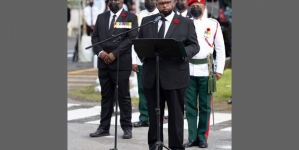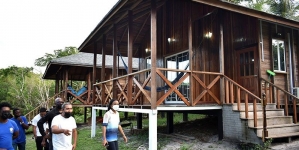Multiple passwords used to delete about 1,000 scanner images linked to Belgium coke bust
Efforts by the Guyana Revenue Authority (GRA) has led to the recovery of a deleted image of a shipping container that the Belgium authorities busted with 11.5 tons of cocaine in early November.
It has also led to the recovery of other deleted items raising shocking questions.
Kaieteur News was informed that the process to retrieve the images taken at the Lombard Street scanning facility of GRA required the use of specialized equipment to ensure the data was recovered intact.
But in their attempts to recover the deleted image file, authorities recovered a thousand more images that were deleted from the scanner’s server.
What is even more of a concern is the fact that to delete images from the scanner, a special “administrative” pass code is required before access is granted, which would lead investigators to suspect that the image of the container in question and others were deliberately tampered with.
This was confirmed by GRA Commissioner General, Godfrey Statia.
Statia told Kaieteur News that “images can be deleted…it depends on if you have an administrative password. And if you are using the administrative password to deliberately delete the images that is where the problem lies.”

After it was discovered that the scanner images were deleted, GRA suspended 11 staffers including a senior manager from the scanning unit.
The Commissioner General reported that an employee would have had to utilize their administrative pass code to delete the image or may have lent it to someone else to do same.
And with the mountain of images now recovered, GRA is tasked with sifting through the pile to determine what passed under the radar.
“We have to go through all the images to show that there was no skullduggery in the past,” he continued.
Four shipping containers left Guyana on September 25, shipped by Marlon Primo’s MA Trading, of Atlantic Ville, East Coast Demerara, to the consignee, Lotraco Recycling BV, The Netherlands.
But checks made by investigators revealed only images of three containers were found as the images of the fourth were deleted.

Under regulations, containers considered high-risk leaving Guyana, have to be scanned at the facility on Lombard Street, Georgetown as part of the country’s protocols for exports.
It would have been impossible for the container to escape GRA’s system of being scanned.
The deletion of the images would embarrass GRA, which has not been without its corruption troubles.
Meanwhile, the Customs Anti Narcotics Unit (CANU) is still seeking local scrap iron dealer, Marlon Primo, a person of interest in the probe. A wanted bulletin has since been issued.
The massive load of cocaine left Guyana on September 25 and was opened in Belgium on October 27. The seized cocaine has an estimated street value at €900 million (about US$1B).
It was disguised as scrap metal and placed inside a steel container, which was in turn packed into a sea container and loaded onto a trans-Atlantic vessel.
It would have been the largest confirmed shipment from Guyana, a trans-shipment point for drugs.






















